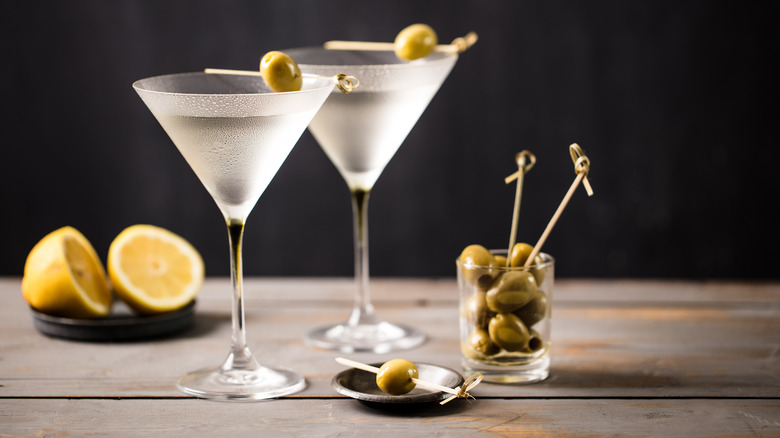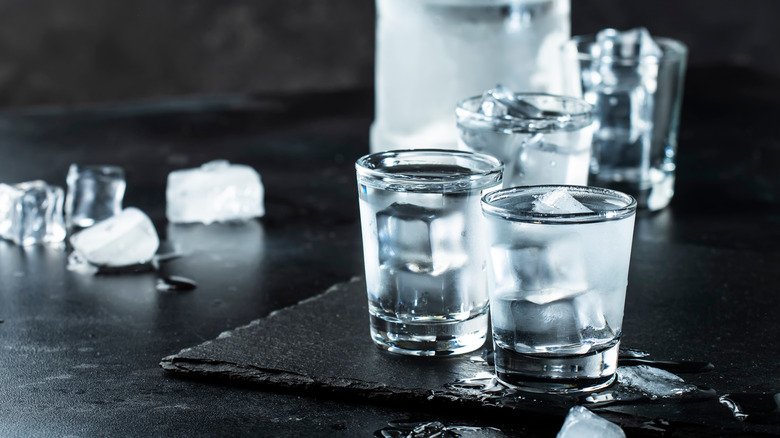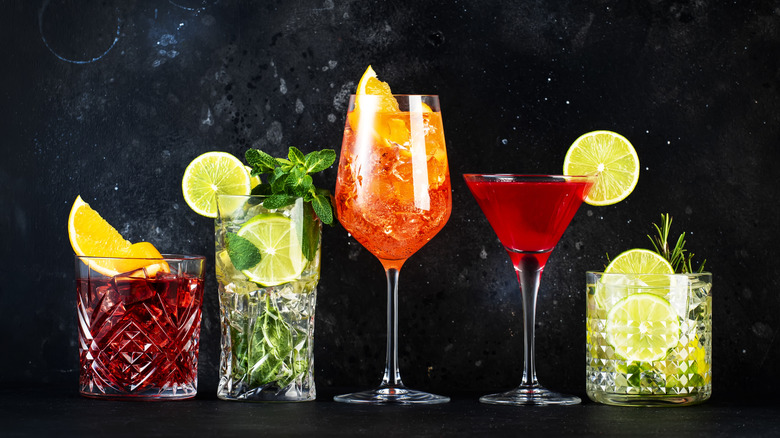The Reason You Should Chill The Glassware For Your Cocktails
Whether a martini should be shaken or stirred is a classic argument even James Bond can't definitively win. But one indisputable fact is this: Your drink is best when it's just made, fresh from the bar, and presented in its proper glassware. From that moment, the temperature will start to climb. This not only changes the experience of your drink, but the chemistry and flavor — and is precisely why a chilled glass is ideal for optimal cocktail enjoyment.
Ice isn't a garnish or even a preference, exactly. It's an ingredient in a cocktail, as is the cold water that results from its melting. In fact, the "cold" itself is part of the composition of the drink, which is why you'll want to use a chilled glass even if your drink is on the rocks. Decisions about whether a drink is served on ice or up, shaken or stirred, which cuts of ice and how much, are made with intention by a bartender who carefully considers the ways temperature and dilution will impact that drink.
There's no avoiding that the temperature of your drink will increase over time, but a chilled glass slows degradation and dilution. If the drink is already on the rocks, a cold glass helps maintain the temperature and prolong the life of the ice. In an "up" drink — served without ice — the cold glass is the ice component. In either case, a chilled glass will help preserve the integrity of your drink longer.
How to chill your cocktail glass
Science tells us that a fully frozen glass will start out the coldest and maintain the optimal temperature the longest. Fortunately, this requires no special equipment or techniques — only that you simply always keep a glass on hand in the freezer for when the mood strikes. That said, if you forget or don't have the space, there are a few hacks to cool your glass quickly.
A classic bartender's trick is to fill the glass you intend to use for the cocktail with ice and water and allow it to sit while building your drink in a shaker or mixing glass. Even better if you have some fizzy water on hand, as the carbonation is thought to accelerate the chilling process. When you're ready, just empty the glass of the cold water and ice and it's ready for you to refill with your drink. You can also place a sturdy glass into a bucket of ice water for about twenty minutes, but be careful to avoid breakage.
Another clever method is to wet a paper towel well with cold water, wring it out as much as you can, and wrap it around your chosen glass. Pop it in the freezer for about three to five minutes, then remove and unwrap the glass to reveal a nice, frosty surface. Fill with your prepared drink, garnish, and serve.
Choosing your glassware for optimal temperature
Selecting the proper cocktail glass is important for several reasons including aromatics and aesthetics, but also for temperature. A thicker glass will take longer to chill but will then maintain the cold longer than a thinner vessel, so if you need to cool a glass in a pinch, it's best to opt for a lighter (if more fragile) option.
A stem also affects the temperature of the drink. In a stemless glass, like an old-fashioned or tumbler glass, the heat transfer from your hand will warm your liquid faster. This means that when possible, it's even more consequential to have a pre-chilled glass. If your priority is maintaining temperature, keep the size of the glass in mind too, as a larger glass means there's a good chance it will take longer to drink, making your liquid more vulnerable to warming over time.
And while most cocktails fall into "the colder, the better" territory, some drinks are meant to be served hot, like a hot toddy or mulled wine. The same principles regarding temperature maintenance apply. To preheat your glass, you can steam the cup if you have access to an espresso machine, quickly microwave it, or fill it with hot water first and then pour out the water before filling it with your cocktail. These drinks are best served in a glass mug with a handle, or a double-walled tumbler to keep your drink hot and your hands safe.


